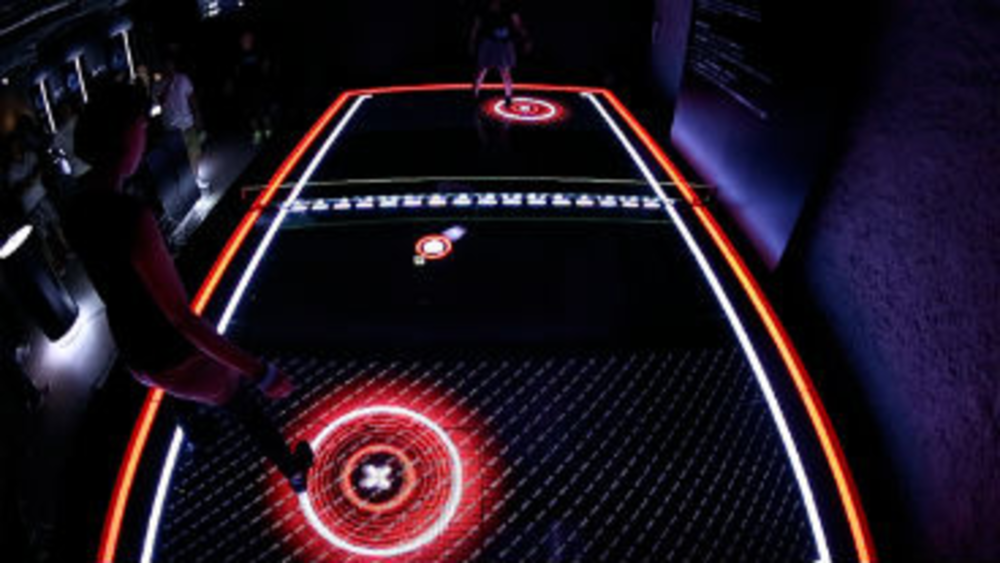Every campaign starts with an idea. Inspiration can strike at any moment: during an all-nighter fueled by caffeine or in a brightly-lit board room on a crisp morning. But often today, before an idea can begin to materialize, the creatives must consult their colleagues in tech, and ask the latter the inevitable question: “Can you make this happen?” These campaigns were made possible by those who could answer “Yes.”
Here are five international marketing campaigns that use technology to amplify their marketing efforts.
Nike Takes It to the Streets of Tokyo
Nike, in partnership with agency AKQA, launched a three-part campaign to promote new athletic shoes featuring Nike’s Lunarlon and Flyknit technology. One of the components of the campaign included an Innovation hunt, where runners were invited to find objects hidden all around Tokyo. The campaign also featured a new take on the game of pong called NikeFuel Rally, where Nike-clad feet of two players control the action on an interactive surface and Nike’s Fuelband keeps track of each player’s score, fusing gaming and product demo. “As devices and services are becoming portable, connected, and pervasive like the Fuelband, the best way to show is not to talk about it, but to demonstrate it,” says Rei Inamoto, Chief Creative Officer/VP at AKQA.
Geox Isn’t Afraid to Get Muddy
Shoe manufacturer Geox let the images do the talking in a campaign created by SMFB Oslo and Stinkdigital. Four “testers,” hailing from Spain, England, France, and Switzerland and recruited from Facebook, visited the rainiest place on Earth—Cherrapunjee, India—to road test the Geox Amphibiox shoe during monsoon season. An interactive documentary, containing footage from the runners, allows viewers to immerse themselves in stunning scenery, and learn how the shoe holds up in extreme conditions.
Land Rover Cracks the Code
Luxury automotive brand Land Rover enlisted the help of Wunderman to build brand presence in Brazil, and to generate buzz around one of the British company’s bestselling models: the Freelander 2 Diesel. Wunderman transformed the Sao Paolo car dealerships using multimedia billboards that captured the “Land Rover spirit.” At night, the vehicles communicated with prospective customers by transmitting Morse code messages by flashing their headlights, powered by a circuit board specifically designed for the campaign. A Facebook app allowed users to decode the messages and then share videos of the cars with the flashing headlights across social channels. “It has never been done before, and [this is why the campaign] attracted a lot of attention, and generated a strong buzz,” says Paulo Sanna, VP, executive creative director at Wunderman Sao Paolo. “It was super effective as a tool to activate our social media consumer base,” he adds.
Carphone Warehouse Takes a Trip Down Memory Lane
Carphone Warehouse, one of Europe’s leading mobile phone retailers, partnered with Cake to create a campaign that captured the company’s heritage, and showcase the broad selection of mobile phones it carries. The company’s “Mobile Memories” campaign took users on an interactive journey starting from the very first device it sold (here’s looking at you, Nokia 3310) to the current array of smartphones. On the brand’s Facebook page, users could chronicle their history with each handset they’ve owned and loved, choosing from among more than 1,000 popular phones from the past 23 years. Once documented, each fan’s mobile history was condensed into a personalized video with a comedy voiceover, which could then be shared on social media sites.
Heritage Bank Rages On
Getting a customer to change banks can be difficult. BCM, an integrated advertising agency in Brisbane, and DG’s MediaMind joined forces to creating an interactive live streaming video banner for Heritage Bank. The campaign, titled “Bye bye bank rage. Hello Heritage,” was designed to convince customers who were least satisfied with their banks to switch to Heritage. The live banner ads, placed on the Courier-Mail website, ran for 24 hours, and invited visitors to enter their name, suburb, and answer the question: “Do you love your big bank?” Once a user clicked on one of the three choices – “Yes,” “No,” or “When Pigs Fly” – they were redirected to a live studio, where the campaign mascot, the Heritage Man, threw tomatoes and other objects into targets corresponding to the three answers. One of the biggest challenges in executing the Australia’s first live 24-hour tomato throwing marathon was sourcing tons of tomatoes, and props, such as toy chickens and water pistols.









